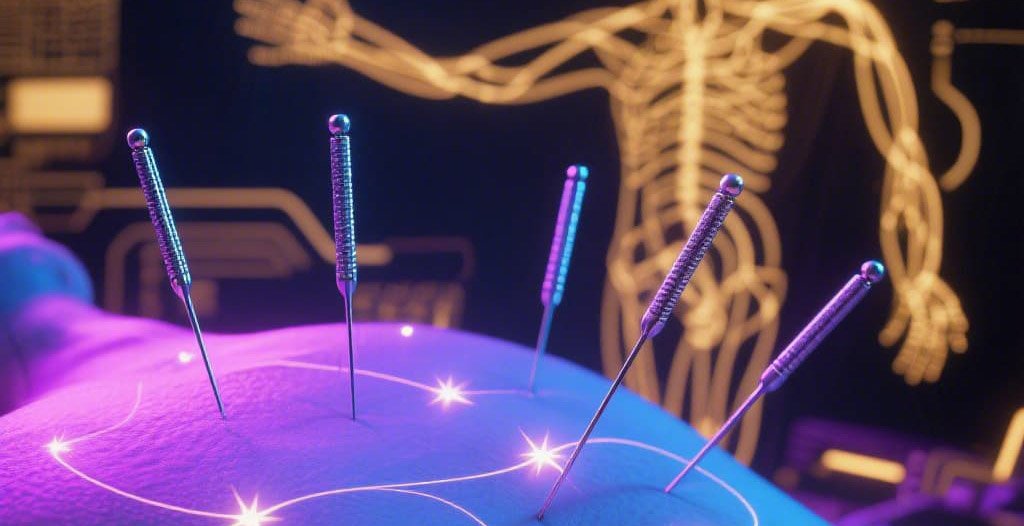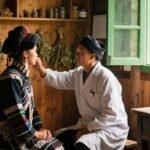Jiangbinwo (Chronic Fatigue Syndrome)
Overview
In Miao medicine, chronic fatigue syndrome is called Jiangbinwo, categorized under “deficiency consumptive disorders.” It arises from unknown causes, overexertion, or poor living conditions, leading to prolonged weakness.
In TCM, consumptive deficiency (xu lao) refers to chronic disorders marked by deficiency of two or more zangfu organs and impairment of qi, blood, yin, or yang functions.
In Western medicine, chronic functional decline—such as immunodeficiency, bone marrow suppression, endocrine disorders, or malnutrition—presenting with fatigue may be approached using similar pattern differentiation.
Huhoujipeng · Miao Classification
Jiangbinwo is a minor disorder divided into two patterns: qi-deficiency fatigue and blood-deficiency fatigue.
Aiduojiang · Causes
Miao medicine cites congenital weakness, emotional injury, excessive sexual activity, overwork, trauma, or poor diet as triggers. External pathogens leave “old damage” that resurfaces; environmental factors and lifestyle also contribute.
Gengduomeng · Pathogenesis
Multiple factors deplete qi and blood. Qi deficiency slows blood flow, causing stasis; blood deficiency further impairs qi movement. Resulting symptoms include shortness of breath, spontaneous sweating, pale complexion, dizziness, tinnitus, night sweats, and bleeding.
Diagnostic Key Points
Diagnosis
(1) Chronic course with deficiency of two or more organs and impairment of qi, blood, yin, or yang.
(2) History of chronic illness, overwork, or other fatigue-inducing factors.
(3) Exclusion of other internal deficiency syndromes.

Tests
CBC, urinalysis, stool exam, blood biochemistry, ECG, X-ray; immune profiling, endocrine testing, and bone marrow exam assist diagnosis.
Differential Diagnosis
Gaoxia (Pulmonary Consumption) is a chronic infectious lung disorder with cough, hemoptysis, fever, and night sweats. Jiangbinwo is noninfectious, involves multi-organ deficiency, and features fatigue and spontaneous sweating rather than pulmonary signs.
Other internal deficiency syndromes may share fatigue but differ in organ involvement, onset, and course.
Pattern Differentiation & Treatment
Qi-Deficiency Fatigue
Manifestations: Poor appetite, chills, shortness of breath, spontaneous sweating, frequent colds, limb weakness, sore back and knees, loose stools.
Meridian: Cold meridian, cold disease.
Principle: Tonify qi and nourish blood (bu qi yang xue); nourish yin and augment qi (yang yin yi qi).
Formula & Actions:
Biejia (Turtle shell, bie jia) 12g — nourishes yin, invigorates blood
Yangquehua (Spiny amaranth, yang que hua) 20g — augments qi, nourishes yin
Diguopi (Lycium bark, di gu pi) 15g — cools blood, clears heat
Sangye (Mulberry leaf, sang ye) 20g — disperses wind–heat, nourishes liver
Blood-Deficiency Fatigue
Manifestations: Palpitations, forgetfulness, insomnia, pale complexion, dizziness, scant or absent menses, dry skin.
Meridian: Cold meridian, cold disease.
Principle: Tonify qi and nourish blood (bu qi yang xue); nourish liver–kidney (zi gan bu shen).
Formula & Actions:
Mianhuagen (Cotton root, mian hua gen) 20g — disperses wind, nourishes blood
Sangshen (Mulberry fruit, sang shen) 20g — nourishes liver–kidney, yin
Daji (Cirsium, da ji) 18g — cools blood, stops bleeding
Qianshicao (Rubia, qian shi cao) 15g — cools blood, detoxifies
Prevention & Care
Eliminate causes of fatigue: rest, avoid overwork, improve living conditions.
Protect against cold–damp exposure.
Eat balanced, nutrient-rich, easily digested foods; avoid smoking and alcohol.
Maintain regular schedule; moderate exercise; limit sexual activity.
Cultivate positive emotions; avoid worry.
Notes
Miao medicine holds that qi, blood, and fluids form the body’s basis. Consumption disorders arise when these elements are depleted by external or internal factors. Treatment emphasizes supplementation—tonifying qi, nourishing blood, strengthening spleen–stomach, and supporting liver–kidney.
Zhuabin Qiangmeng (Overstrain Injuries)
Also known as “An Gabao Jiangshang” and equivalent to the folk concept of “Five Griefs and Seven Injuries,” Zhuabin Qiangmeng arises from long-term overexertion.
Huhoujipeng · Miao Classification
Four minor patterns:
Cold-disease blood-deficiency overstrain
Heat-disease spleen–stomach weakness overstrain
Heat-meridian lung-deficiency overstrain
Cold-meridian kidney-deficiency overstrain
Gengduomeng · Pathogenesis
Poor constitution or excessive workload injures muscles, bones, and organs over time. Improper exertion, diet, or lifestyle leads to qi and blood deficiency, meridian malnutrition, and eventual overstrain injury.
Pattern Differentiation & Treatment
Cold-Disease Blood-Deficiency Overstrain
Manifestations: Palpitations, chills, forgetfulness, insomnia, pale complexion, dizziness, numb limbs, meridian stiffness, irregular menses or amenorrhea.
Principle: Nourish liver–kidney yin and augment qi–blood (zi gan bu shen, bu qi yang xue).
Formula:
Sangshen (Mulberry root, sang shen) 20g
Jianxuefei (Sargentodoxa, jian xue fei) 15g
Jixueteng (Millettia vine, ji xue teng) 20g
Lubiyan (Lysimachia, lu bi yan) 20g
Hongzao (Red dates, hong zao) 50g
Heat-Disease Spleen–Stomach Weakness Overstrain
Manifestations: Emaciation, limb weakness, dry mouth, poor appetite, constipation, flushed complexion.
Principle: Strengthen spleen, harmonize stomach, tonify qi–blood (jian pi he wei, bu qi yang xue).
Formula:
Shan yao (Chinese yam, shan yao) 15g
Bai zhu (Atractylodes, bai zhu) 15g
Shi hu (Dendrobium, shi hu) 10g
Sha shen (Glehnia, sha shen) 15g
Mai ya (Barley sprout, mai ya) 10g
Ku yang tou (Picrorhiza, ku yang tou) 15g
Heat-Meridian Lung-Deficiency Overstrain
Manifestations: Dry cough, throat dryness, hemoptysis, hoarseness, flushed face, night sweats, lumbar soreness, seminal emission, weakness, dizziness, tinnitus.
Principle: Strengthen spleen–lung, nourish yin (jian pi yang wei, bu qi yang xue).
Formula:
Huang jing (Solomon’s seal, huang jing) 20g
Digupi (Lycium bark, di gu pi) 15g
Sha shen (Glehnia, sha shen) 20g
Maidong (Ophiopogon, mai dong) 15g
Yiduyun (One-cloud herb, yi du yun) 15g
Shui lian (Water lily, shui lian) 15g
Cold-Meridian Kidney-Deficiency Overstrain
Manifestations: Chest oppression, cold limbs, pale complexion, palpitations, fatigue, poor appetite, lumbar soreness, seminal emission, frequent urination, diarrhea, menstrual irregularity.
Principle: Nourish liver–kidney, tonify qi–blood (zi gan bu shen, bu qi yang xue).
Formula:
Cili (Rosa roxburghii, ci li) 20g
Shan yao (Chinese yam, shan yao) 15g
Wuzhuyu (Evodia, wu zhu yu) 10g
Dangshen (Codonopsis, dang shen) 15g
Zhizhu xiang (Spider lily, zhi zhu xiang) 20g
Ku yang tou (Picrorhiza, ku yang tou) 15g
Zhenbu Ke (Rosa roxburghii): warm; sour-astringent flavor; promotes digestion, strengthens the spleen, and has an astringent effect.
Nali (Chinese yam, Dioscorea opposita): warm; sweet flavor; nourishes yin, clears heat and toxins, regulates qi, and relieves pain.
Doukao (Evodia fruit, Evodia rutaecarpa): warm; numbing-spicy flavor; mildly toxic; warms the middle burner, disperses cold, and dries dampness.
Jiaouwu (Codonopsis root, Codonopsis pilosula): warm; sweet flavor; strengthens the middle burner and tonifies qi.
Le (Notopterygium root, Notopterygium incisum): warm; numbing-spicy flavor; regulates qi, relieves pain, expels wind, and detoxifies.
Ameigun (Picrorhiza rhizome, Picrorhiza kurroa): cold; sour-bitter flavor; resolves food stagnation.
Disclaimer:
This article is provided solely for the cultural and educational study of traditional medicine. It should not be construed as medical diagnosis or (used in traditional contexts). Before applying any of the therapies described above, you must consult a licensed physician in your jurisdiction.



Leave a Reply